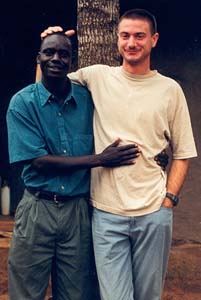

Feeding ecology, social behavior and physiological responses to stressors in blue and Sykes' monkeys (Cercopithecus mitis stuhlmanni and C. m. albogularis)
Glucocorticoid (GC) hormones can be a valuable tool for identifying the physiological consequences of behavioral and life history strategies. Accurately interpreting GC variation under natural conditions and inferring its adaptive significance, however, requires the integration of multiple sources of stress and the consideration of both its costs and benefits. Using data from two wild populations of Cercopithecus mitis in Kenya, I assessed the relative importance of metabolic versus psychological stressors for modulating fecal GC concentrations in 32 adult females in three social groups. Temporal variation in GC excretion of individuals was primarily determined by fluctuations in the quantity, quality, and distribution of food resources, but not by reproductive stage or variation in rates of agonistic interactions. Similarly, individual differences in mean fGC excretion related most to individual differences in the relative consumption of fruits versus leaves. A clear rank effect on fGC excretion, with low-ranking females excreting higher levels compared to high-ranking females, appeared in only one of the study groups and seemed to depend on the particular combination of dietary composition, food abundance, contest competition, and coping strategies available to low-ranking females. Contrary to these results, comparisons between study groups in one population revealed that mean fGC excretion was elevated in the group whose females spent relatively more time feeding on fruits and experienced higher rates of feeding agonism, while group differences in fruit feeding were not related to indices of abundance or feeding effort. Comparison across populations further supported an association between relative consumption of fruits compared to leaves, levels of contest competition and fGC excretion. Females across the three study groups did not differ in the use of social coping as indicated by multiple grooming indices, but individual differences in the same indices within a group suggested that social coping may have mitigated responses to psychological stressors. Overall, these results highlight possible fitness benefits of high rank in some social groups of C. mitis, but also suggest the existence of highly intricate and partially unresolved relationships between different proximate factors of GC variation that may operate on different scales and warrant further study.